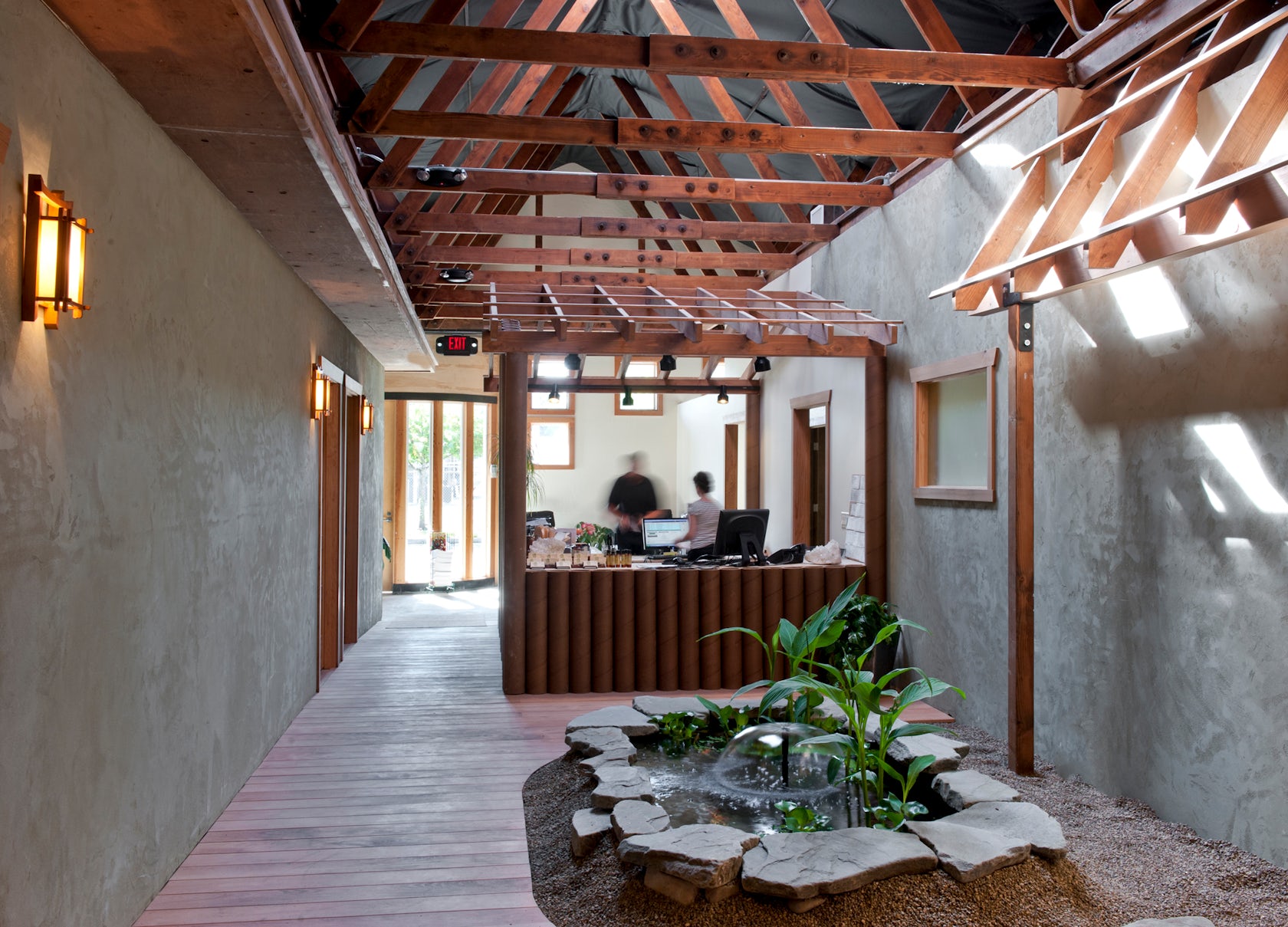Architects: Want to have your project featured? Showcase your work through Architizer and sign up for our inspirational newsletters.
Though similar in intent, these seven spaces aren’t your typical hoary hospital architectures. Primarily employing Eastern medicinal techniques focused on holistic well-being, the following seven healthcare facilities offer moments of architectural respite and contemplation. Despite employing methodology that primarily originates in the Eastern Hemisphere, the buildings in this collection are geographically diverse. The healing centers in North and South America are sometimes situated within denser cityscapes, yet the aura of each space retains the philosophy that tranquility can alleviate malaise.
By using materiality and greenery, as well as employing the influence of traditional Eastern medicinal spaces, these buildings demonstrate the ability of architecture to incite corporeal change. They have programs that include rock gardens, music studios, occupational and sensory gymnasiums, sleeping quarters, courtyards, massage, meditation and therapy rooms. Though these activities typically require less specialized equipment than a standard Western hospital, the presence of architecture that is perfectly harmonized to the central aim of physical and spiritual healing has itself become a therapeutic tool.



A Healing Space by 2fORM Architecture, Eugene, United States
Located in the bustling college town of Oregon’s flagship university, this healing space by 2fORM Architecture has quite literally brought East to West. Inspired by the streetscapes of small and traditional Japanese villages, the architects sought to replicate the scene on the interior of this west coast chiropractic clinic. They transformed the circulatory spaces within the interior of the clinic into exterior-esque avenues. Fitted with rocks, flowing water and lush greenery, the main walkway connects the varied massage and treatment rooms (or “buildings”) along either side.

© dkstudio architects inc.

© dkstudio architects inc.

© dkstudio architects inc.
Tao Sangha Healing Centre by dkstudio, Toronto, Canada
The Tao Sangha Healing Centre in Toronto preserves the Japanese tradition of Shiatsu massage as well as reserves spaces for music and art within this close-knit community. Core to the design were the Japanese principles of harmony and balance. These ideas were evident in the economy and space planning of the building but also engendered the artful use of material, nuanced composition of elements and thoughtful consideration of the surrounding neighborhood.

© Kodiak

© Michael Venera

© Kodiak
Cavallo Point New Lodge Healing Center by Leddy Maytum Stacy Architects, Sausalito, United States
The Cavallo Point New Lodge Healing Center is just across the bay from busy San Francisco, but feels a world’s away from the stress often associated with urban living. Home to the “Healing Arts Services” at the lodge, this center provides patrons with acupuncture treatments, massages, chakra and energy consultations, hypnotherapy and nutrition and herbology planning. The center is scented with pine needle décor, heated through a roaring fire and illuminated with copious natural light coming through the building’s large paneled glazing. In tune with the elements, the architecture allows visiting bodies the opportunity to realign within.

© CROX

© CROX

© CROX

© CROX
One Taste Holistic Health Club by Crox International Co, Hangzhou, China
Though this example is in the Eastern Hemisphere, its situation in Hangzhou, China, doesn’t quite lend itself to the serenity usually associated with healing centers. Yet despite the urban proximity, the architects were able to carve out a rich slice of tranquility. The site is bounded by a thick masonry wall that engenders the semblance of isolation and reflection. Similarly, the interior rooms for dining, conversing, rest and meditation are each focused internally to inhibit distraction and enable privacy.

© Samuel Bravo

© Samuel Bravo

© Samuel Bravo

© Samuel Bravo
Ani Nii Shobo by Samuel Bravo, Ucayali, Peru
Unique to this collection, this healing center in the Peruvian Amazon region of Ucayali didn’t face the challenge of overcoming an urban locale. The absolutely remote location already embodied the philosophies of embracing nature and seeking strength in silence. Still, architect Samuel Bravo was able to employ a design that furthered the needs of employing traditional medicine. The Shipibo people’s practice requires the use of a gridded framework, tall sloped roofs (for rain runoff), permeable screens, cross-ventilation as well as ritual dining and communal spaces, all of which Samuel Bravo was able to incorporate into his carefully crafted architecture for the center.

© Anuar Aziz Architect (a member of Arte Axis Design Group)

© Anuar Aziz Architect (a member of Arte Axis Design Group)

© Anuar Aziz Architect (a member of Arte Axis Design Group)

© Anuar Aziz Architect (a member of Arte Axis Design Group)
SOCSO Rehabilitation Centre by Anuar Aziz Architect, Malacca, Malaysia
SOCSO Rehabilitation Centre in Malaysia has the very particular mission of aiding disabled patients in gaining the physical mastery to accomplish vocational skills and rejoin the workforce. To do so, the organization commissioned Anuar Aziz Architect to design the center. The architecture is green-certified and green-filled. The courtyard with a “garden” (that more likely resembles a forest) is intended to create the environment of a resort rather than that of a healthcare facility and is used for patients to rest following treatments. The Surau (Muslim prayer hall) serves as the central axis and establishes the importance of spiritual healing alongside one’s physical advances.

© Matthew Millman Photography

© Matthew Millman Photography

© Matthew Millman Photography

© Matthew Millman Photography

© Matthew Millman Photography
Windhover Contemplative Center by Aidlin Darling Design, Stanford, United States
This contemplative center on the Stanford campus is a safe haven for overextended co-eds. The architects at Aidlin Darling Design used Nathan Oliveira’s Windhover paintings as a focal point à la Houston’s Rothko Chapel. The program is simple and straightforward throughout, with little variation in objective, yet the architects managed to create differentiated spaces with a holistic vision. Each area, those both interior and exterior, incites the unified sensory experience desired.
Architects: Want to have your project featured? Showcase your work through Architizer and sign up for our inspirational newsletters.









